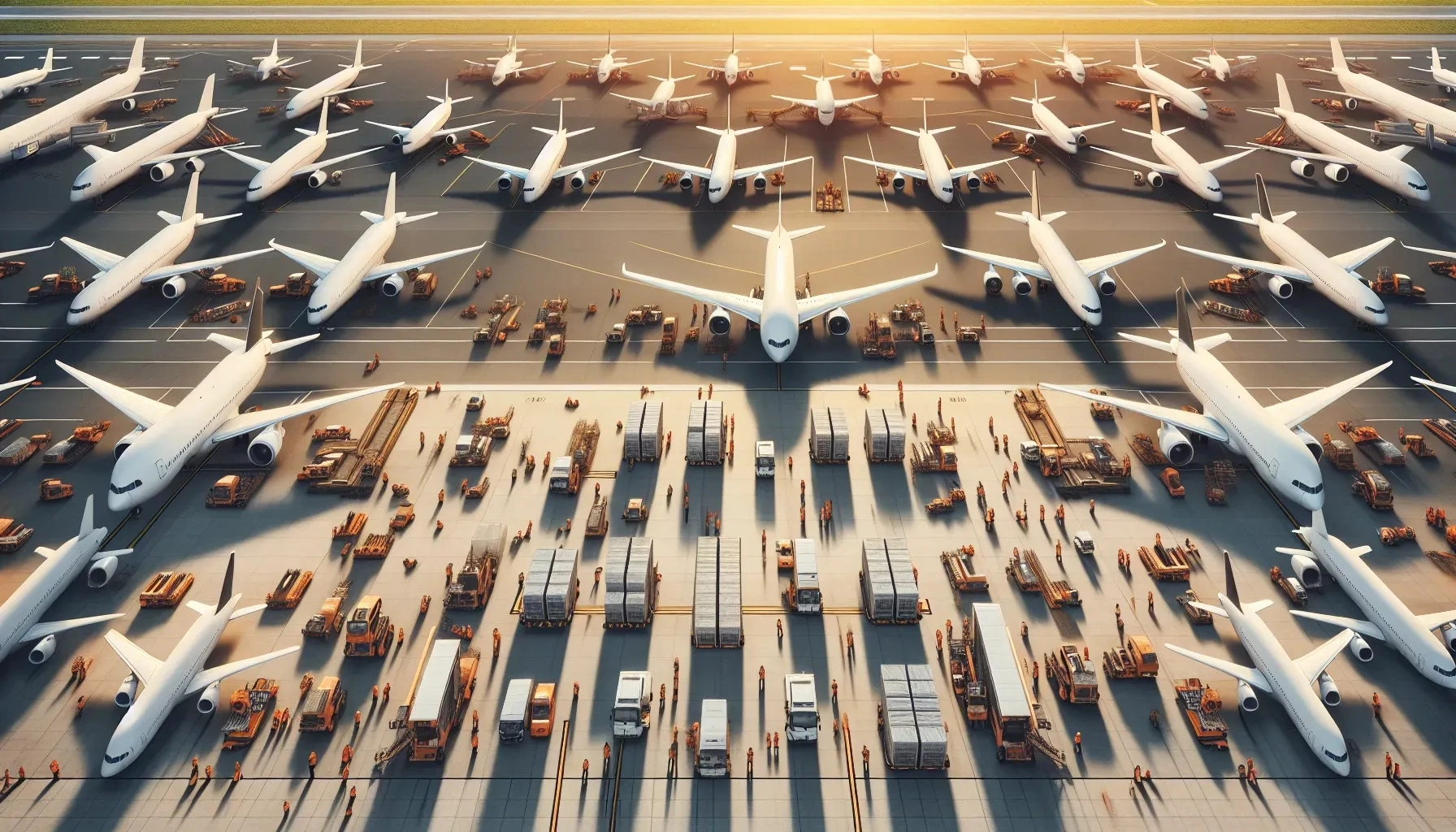Aviation
Airlines Face Shortage of 5,352 Aircraft as Supply Chain Crisis Deepens
Published
6 months agoon

The global aviation industry is grappling with a severe aircraft shortage of up to 5,352 planes, according to new analysis from the International Air Transport Association (IATA), as persistent supply chain disruptions continue to constrain airlines’ ability to meet surging passenger demand.
The shortage, detailed in IATA’s latest Chart of the Week released on Friday, represents a structural challenge that could extend well into the next decade, forcing carriers to fundamentally reassess their fleet planning and investment strategies.
Read Also:
According to IATA, the aircraft manufacturing crisis has its roots in lean production models and just-in-time inventory management systems that proved vulnerable when the pandemic brought global production to a near standstill.
The resulting labour attrition, supplier insolvencies, and loss of industrial expertise have created bottlenecks that IATA describes as “rather structural” in nature.
The backlog for new aircraft has reached 17,000 planes, a record high, whilst manufacturers now operate with delivery schedules stretching over more than a decade.
This unprecedented situation has forced airlines to adjust their competitive dynamics across the industry as they struggle to secure adequate fleet capacity.
Shortage Indicators
IATA’s analysis employs several methodologies to quantify the aircraft deficit. Assuming continued trend growth in aircraft production at an average of 1.7% annually over the past decade, the association calculates that the market has accumulated a shortfall of approximately 4,814 aircraft between 2019 and 2025.
When factoring in the historic high aircraft order backlog and comparing it to stable historical ratios relative to active fleets, the shortage expands to 5,352 aircraft, an additional 538 planes beyond the trend-based calculation.
In addition, aircraft utilisation metrics provide further evidence of the crisis as available Tonne Kilometres per aircraft reached a record 54 million in 2024, compared to 42 million on average in the decade leading to 2019.
IATA explained that if this increased utilisation solely reflected aircraft scarcity, it would suggest a structural shortfall of around 3,092 aircraft.
Perhaps most strikingly, IATA estimates that without the COVID-19 pandemic or other demand disruptions, an additional 10,000 aircraft would be required today to meet theoretical demand levels.
This figure underscores the magnitude of the supply gap and highlights the severe impact of supply chain disruptions on the airline industry.
In 2025, 1,692 aircraft are expected to be delivered. Although this would mark the highest level since 2018, it is almost 26% lower than year-ago estimates, according to IATA’s recent industry outlook.
Industry Adapts to New Reality
The aircraft shortage has fundamentally altered airline operations, with carriers achieving record efficiency with 83.5% of all seats filled, a new record high, partially attributable to the supply chain constraints that limited capacity growth.
Airlines have been forced to extend the operational life of older, less efficient aircraft models whilst simultaneously dealing with engine manufacturing delays and component logistics issues that ground existing planes for extended periods.
Long-Term Implications
Industry analysts suggest that supply chain issues are expected to persist in 2025 and possibly to the end of the decade, indicating that the current aircraft shortage may represent a prolonged challenge rather than a temporary disruption.
The crisis has exposed vulnerabilities in aviation manufacturing systems that prioritised efficiency over resilience, forcing a reassessment of production strategies across the aerospace sector.
As manufacturers struggle to rebuild capacity and expertise lost during the pandemic, airlines must navigate an environment where aircraft availability, rather than passenger demand, has become the primary constraint on growth.
The shortage continues to reverberate through the aviation ecosystem, affecting everything from route planning and pricing strategies to investment decisions and competitive positioning within the global airline industry.
Share this:
- Click to share on X (Opens in new window) X
- Click to share on Facebook (Opens in new window) Facebook
- Click to share on WhatsApp (Opens in new window) WhatsApp
- Click to share on Pocket (Opens in new window) Pocket
- Click to share on Telegram (Opens in new window) Telegram
- Click to email a link to a friend (Opens in new window) Email
- Click to share on LinkedIn (Opens in new window) LinkedIn
You may like


INSIGHT: How Visa Mismatches Endanger Aviation Sector


Shortage Crisis: Operators Wait 14 Years for 17,000 Aircraft Supply Backlog


Global Aviation Eyes Historic $979bn Revenue


Demand for African Airline Tickets Surges by 11.9% – IATA


Nigeria Blocks Repatriation of $191m Foreign Airlines’ Funds in 2023


Global Airline Industry Envisages $779Bn Revenue, Return to Profitability in 2023








